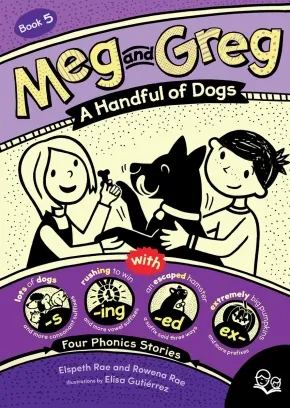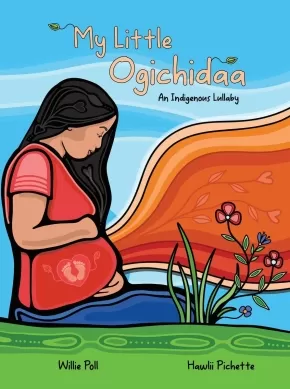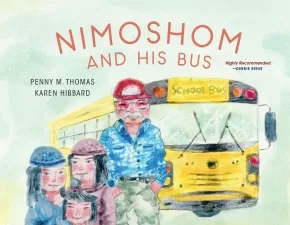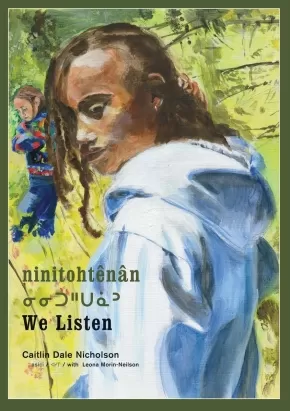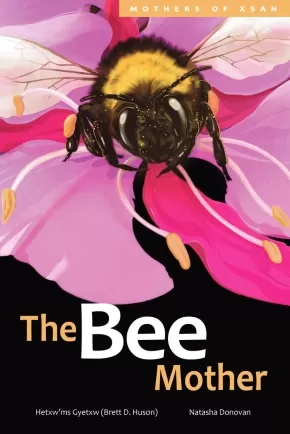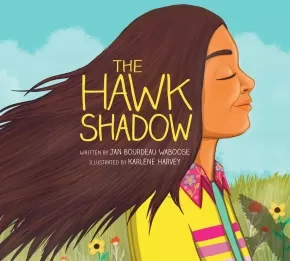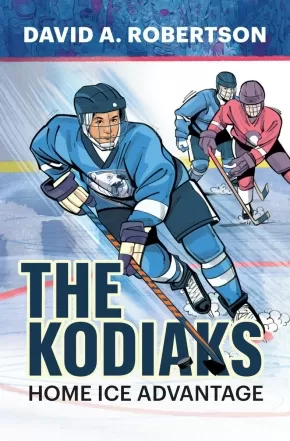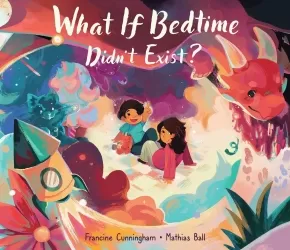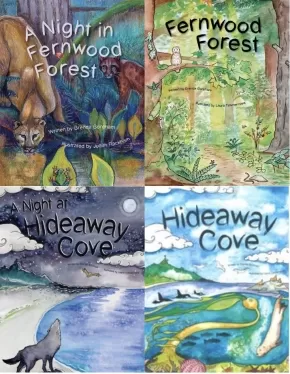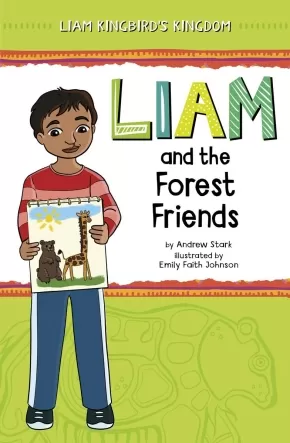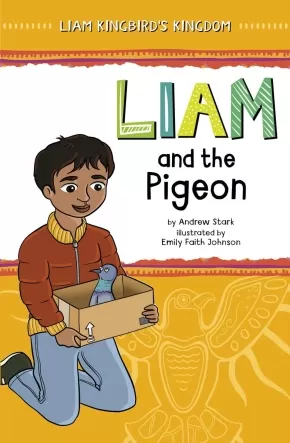
English Language Arts
16
-
30
of
186 Results;
Sort By
Go To
of 13
Meg and Greg: A Handful of Dogs
$16.95
Artists:
Format:
Paperback
ISBN / Barcode: 9781459838239
Synopsis:
Synopsis:
A decodable book featuring four phonics stories for striving readers, with special features to help children with dyslexia or other language-based learning difficulties find reading success.
Meg and Greg are back to school and ready for fall fun! Join Meg, Greg and friends as they plan an event for dogs at the fall fair, solve challenging clues in a scavenger hunt, complete their planned science-fair project and look after excitable kindergarteners at the pumpkin patch.
Meg and Greg: A Handful of Dogs is the fifth book in the Meg and Greg series designed for shared reading between a child learning to read and an experienced reader. The four stories inside introduce different types of suffixes and prefixes (consonant suffixes -ful -ly -ment -s, vowel suffixes -en -er -es -est -ing -y, the suffix -ed and prefixes de- dis- ex- in- pre- re- un-) and the spelling rules for adding them to base words. In addition to the familiar comic-style kids’ pages, Book 5 features new highly controlled and decodable prose pages to gently increase the amount of text that readers experience and to provide even more opportunities to practice the reading skills previously introduced in Meg and Greg Books 1–4!
Educator & Series Information
Recommended for ages 6 to 9.
This book includes features to accommodate struggling or dyslexic readers, such as comic-book-style illustrations, a dyslexia-friendly typeface with ample spacing and shaded paper to reduce contrast between text and paper—all of which make this series more accessible.
Targeted at struggling readers ages six to nine has a wide appeal to ELL readers, reluctant readers and at-level readers alike with its engaging and age-appropriate plots and low reading level that doesn’t demoralize or stigmatize struggling readers.
This is the fifth book in the Orca Two Read series, designed for shared reading between a child learning to or struggling to read and an experienced reader. All of the stories have special features to help a child with dyslexia or another language-based learning difficulty find reading success.
Additional Information
160 pages | 5.87" x 8.25" | Paperback
My Little Ogichidaa: An Indigenous Lullaby
$19.99
Artists:
Format:
Hardcover
Text Content Territories:
Indigenous Canadian; First Nations; Anishinaabeg;
ISBN / Barcode: 9781778540301
Synopsis:
Synopsis:
My Little Ogichidaa is inspired by Indigenous motherhood. It invites readers to explore the compelling dreams and hopes of an Indigenous parent for her soon-to-be-born warrior.
The word Ogichidaa itself means warrior in Anishinaabemowin, and this beautifully illustrated book is a tribute to Indigenous families everywhere who are proudly raising their children to carry forward their culture, language, and love with resilience, strength, and kindness. This story is proof that despite colonization, our world is full of Indigenous art, beauty, love, and brilliance. Through the eyes of a mother, readers gain insight into the profound bonds of family and community that are central to Indigenous life. This heartwarming and empowering story is a celebration of Indigenous love and the powerful legacy that it creates.
Educator Information
Recommended for ages 6 to 8.
Find a lesson plan for this book here: My Little Ogichidaa Teacher Lesson Plan
This book is available in French: Ma petite Ogichidaa: une berceuse autochtone
Recommended in the Indigenous Books for Schools catalogue as a valuable resource for English Language Arts and Social Studies, in Grades 2 to 4.
Themes: Ancestors, Decolonization, Resilience, Connectedness to Culture, Family
Additional Information
36 pages | 8.50" x 11.00" | Hardcover
Nimoshom and His Bus (PB)
$14.00
Artists:
Format:
Paperback
Text Content Territories:
Indigenous Canadian; First Nations; Cree (Nehiyawak);
Grade Levels: Preschool; Kindergarten;
ISBN / Barcode: 9781774921166
Synopsis:
Synopsis:
In this warm and joyful picture book highly recommended by Debbie Reese, children learn Cree from Nimoshom, their school bus driver.
Based on the author’s memories of her grandfather, Nimoshom is not your average bus driver. He loves to drive the school bus, tell silly stories, and share his language with the kids who ride his bus.
Nimoshom and His Bus introduces readers to common Cree words and phrases alongside the common childhood experience of riding the school bus. A Cree word list is included in the back of the book.
Reviews
"Through accessible language and engaging visual resources, readers are introduced to basic Cree as Nimoshom responds in this language to the children who ride his bus.... The illustrator’s varying the visuals between full double spreads and single page illustrations keeps the pacing lively. Amidst a rural fall setting, with woodland animals, children, and the school bus, Nimoshom’s humorous nature shines through these gentle illustrations. At the end of this story, you just want to give Nimoshom a great big hug!"— Anita Miettunen, CM: Canadian Review of Materials
"In this bilingual book, readers follow a bus driver picking up kids and dropping them off before and after school. Like the students on the bus, readers quickly learn that the driver's native language is Cree, and he often speaks to them in his native language. Readers learn that "Nimoshom" means "my grandfather" and that "Ekosani" means thank you" as the author (of Cree descent herself) weaves Cree words into the text, and each new spread almost feels like a gentle wave: yes, we're subtly learning new words, but it never feels strenuous or forced, rather it's calm and poetic."— Let's Talk Picture Books
"While Penny M. Thomas' story is not a plot-driven allegory or a message-based lesson, Nimoshom and His Bus is a sweet introduction to some simple Cree words in the context of a common-place activity for many children.... Karen Hibbard who uses watercolours and pastels to create a gentle background for Nimoshom's day on his bus gives the story a grassroots mood, highly appropriate for a routine day of activity and interaction for this bus driver and his charges. It's very relatable."— Helen Kubiw, CanLit for Little Canadians
"If you're a regular reader of AICL, you know that we're always delighted by books by Native writers--especially ones set in the present. Books like Nimoshom and His Bus provide Native children with mirrors that non-Native children find in abundance.... I highly recommend Nimoshom and His Bus! It'd be a simple thing to use other Native words in addition to--or instead of--the Cree words in the book."— Debbie Reese, American Indians in Children's Literature
Educator Information
Recommended for ages 3 to 5.
Additional Information
24 pages | 9.50" x 7.50" | Paperback
ninitohtênân / We Listen
$21.99
Artists:
Format:
Hardcover
Text Content Territories:
Indigenous Canadian; First Nations; Cree (Nehiyawak);
ISBN / Barcode: 9781773068596
Synopsis:
Synopsis:
The third book in the Nôhkom series, in Cree and English, tells a story about gathering leaves for Labrador tea, while listening in different ways.
A child, her family and her friend have arrived at their favorite picnic spot by the lake, but before they eat lunch Nôhkom suggests they pick leaves for Labrador tea. Once among the trees, Nôhkom pauses for a moment to listen, and the others do too. Nôhkom prays, the girls take their turn, then Nôhkom shows them where to find the leaves. Nôhkom and Mom rest after harvesting, but the girls opt for a swim in the lake ... though they're quite happy to warm up afterwards with freshly brewed Labrador tea. And when it's time for the picnic, the girls take another turn at listening.
Beautifully rendered paintings in acrylic on canvas show the family outing. Includes a recipe for Labrador tea as well as a salve made from Labrador Tea leaves.
Educator Information
Recommended Ages: 3 to 7.
Written in short sentences in Cree and English (with Cree text appearing in standard roman orthography and syllabics), the book is a good choice for beginning readers and/or language learners.
This book is the third book in the Nôhkom series.
The story features different forms of listening — in the bush, to teachings from Nôhkom, to the conversation of family and friends (when listening can be especially fun!).
Key Text Features
illustrations
recipe
informational note
Correlates to the Common Core State Standards in English Language Arts:
CCSS.ELA-LITERACY.RL.1.2
Retell stories, including key details, and demonstrate understanding of their central message or lesson.
CCSS.ELA-LITERACY.RL.1.7
Use illustrations and details in a story to describe its characters, setting, or events.
Authenticity Note: Translator Leona Morin-Neilson is the inspiration for the stories and art in the Nôhkom series, which highlights her traditional knowledge of the uses of wild plants. She collaborated with the author to create this work and translated it into Cree.
Because of the collaboration between Leona and the author, and Leona's Cree translation, this book has been labelled as containing Authentic Indigenous Text. It is up to readers to determine if this work is authentic for their purposes.
Additional Information
24 pages | 8.50" x 12.25" | Hardcover
The Bee Mother
$24.95
Artists:
Format:
Hardcover
Text Content Territories:
Indigenous Canadian; First Nations; Gitxsan (Gitksan);
ISBN / Barcode: 9781774920800
Synopsis:
Synopsis:
Discover the important role of bumblebees, honeybees, and wasps as pollinators in this colourful picture book for young scientists.
Learn about the life cycles of different kinds of bees in this enlightening picture book.
As flowers and trees begin to bud and bloom, Nox Ap, the bee mother, emerges from her winter sleep. To the Gitxsan, she is nature’s gardener. Without her hard work as a pollinator, we could not enjoy the fruits of strawberries and huckleberries. Follow her life from the first thaw of spring to the end of autumn.
In the seventh book of Hetxw'ms Gyetxw (Brett D. Huson)’s Mothers of Xsan series, readers will discover the important role of the bumblebee, the honeybee, and the yellow jacket wasp in the Xsan ecosystem.
Reviews
“Described with delicious adjectives (“pillowy moss floor”) that enrich the story...lushly colored and detailed; the fur on the bumblebee looks ready to be brushed. This great blend of nonfiction with narrative and amazing illustrations will engage readers in the life of bees and their significance to the Gitxsan Nation. A solid general purchase.” — School Library Journal
Educator & Series Information
Recommended for ages 9 to 12.
This book is part of the Mother of Xsan series, which uses striking illustration and lyrical language to bring the poetry of the Xsan ecosystem to life. It is the seventh book in the series.
Reading Level: Fountas & Pinnell T
Lexile® Framework for Reading: 1140L
Recommended in the Indigenous Books for Schools catalogue as a valuable resource for English Language Arts and Science in grades 2 to 6.
Themes: Animals, Land, Language, Sustainability, Life Cycles, Biodiversity, Interdependence, Seasons
Additional Information
32 pages | 6.50" x 10.00" | Hardcover
The Hawk Shadow
$23.99
Format:
Hardcover
Text Content Territories:
Indigenous Canadian; First Nations; Anishinaabeg; Ojibway;
ISBN / Barcode: 9781525310843
Synopsis:
Synopsis:
A pitch-perfect story about sibling bonds and Anishinaabe cultural traditions, from the bestselling author of SkySisters.
Serenity is following her brother, Big Ed, to his fishing spot on Hawk River. Big Ed explains that the river is named for the Hawk, Gekek, the Keepers of the river and their Protectors. “They see things far off in the distance, things we can't,” he tells Serenity. Later, when Big Ed gets in trouble while fishing, Serenity follows the Hawk's shadow to come to her brother's aid. Bestselling author Jan Bourdeau Waboose showcases Indigenous storytelling traditions in this compelling picture book featuring Ojibwe words and cultural practices. Karlene Harvey's brightly colored illustrations stunningly capture the natural world of the bush. The sibling relationship, full of teasing and admonitions, is pitch-perfect, and will be relatable to readers of any age. This captivating book, with its rich narrative and riveting climax, is a wonderful choice for reading aloud. It's an excellent accompaniment to social studies lessons on cultures, local and global communities, and Indigenous Peoples. It also offers a perfect opportunity to encourage children to notice the natural world where they live.
Educator Information
Recommended for ages 4 to 7.
Additional Information
32 pages | 10.00" x 9.00" | Hardcover
The Kodiaks: Home Ice Advantage
$12.95
Format:
Paperback
Text Content Territories:
Indigenous Canadian;
ISBN / Barcode: 9781774921012
Synopsis:
Synopsis:
Hockey fans will love this action-packed middle-grade novel about teamwork, overcoming adversity, and being proud of who you are and where you come from.
Everything is changing for 11-year-old Alex Robinson. After his father accepts a new job, Alex and his family move from their community to the city. For the first time in his life, he doesn’t fit in. His fellow students don’t understand Indigenous culture. Even a simple show of respect to his teacher gets him in trouble.
Things begin to look up after Alex tries out for a local hockey team. Playing for the Kodiaks, Alex proves himself as one of the best, but he becomes a target because he’s Indigenous. Can Alex trust his teammates and stand up to the jerks on other teams? Can he find a way to fit in and still be who he’s meant to be?
Reviews
“Conflicts that make you think. David expertly weaves entertainment and humour with life lessons—and suggestions for making the world a better place.” — Kevin Sylvester, author/illustrator of The Hockey Super-Six
"Hockey fans will love this action-packed middle grade novel...a really nice addition to the field." — School Library Journal
Educator & Series Information
Recommended for ages 9 to 12.
This book is part of the Breakout Chronicles series.
Big Ideas: Aspects of Indigenous Cultures, Worldviews, Teachings and Protocols, Contemporary Setting, Diverse and Inclusive Representation, Identity, Social Emotional Learning, Character Education, Courage, Friendship, Self-Esteem and Self-Reliance, Social Justice, Discrimination, Impacts of Colonization and Colonialism, Prejudice and Racism, Bullying, Resilience.
Recommended in the Indigenous Books for Schools catalogue as a valuable resource for English Language Arts in grades 6 to 10.
Content Warning: Racism, stereotypes, culturally offensive language, violence, and bullying
This book is available in French: Les Kodiaks: L'avantage de la glace
Additional Information
184 pages | 5.25" x 8.00" | Paperback
The Pencil (PB)
$14.95
Artists:
Format:
Paperback
Text Content Territories:
Indigenous Canadian; Inuit;
ISBN / Barcode: 9781772275377
Synopsis:
Synopsis:
Susan and her sister, Rebecca, love watching their mother write letters to people in other camps. Their mother has one precious pencil, and she keeps it safe in her box for special things. One afternoon, their mother leaves the iglu to help a neighbour, and Susan, Rebecca, and their brother Peter are left with their father. They play all their regular games but are soon out of things to do—until their father brings out the pencil! As Susan draws and draws, the pencil grows shorter and shorter. What will their mother think when she comes home? Based on author Susan Avingaq’s childhood memories of growing up in an iglu, this charming story introduces young readers to the idea of using things wisely.
Reviews
[A] wonderful and touching story about resilience and thrift and community. The illustrations are appropriately done in pencil, and they are playful and open and beautiful." — The New York Times Book Review
"[A] rich and moving story about how small things can make a tremendous difference in children’s lives...Avingaq’s childhood is beautifully evoked in this charming story about the need to take care of our belongings." — The Globe and Mail
"Authors Avingaq and Vsetula understand life in Nunavut, Canada, and embed in the story the importance of being responsible for belongings and caring for them wisely...A breath of warmth from the far north." — Kirkus Reviews
"A family-focused story with a light moral that lovingly illuminates a lifestyle rarely seen in children’s books." — School Library Journal
"The Pencil goes beyond a lesson in frugality and becomes a story of family, of play and of culture, which many children will appreciate." — CanLit for Little Canadians
Educator Information
Recommended for ages 6 to 8.
Additional Information
36 pages | 9.00" x 7.50" | Paperback
What If Bedtime Didn't Exist?
$23.99
Artists:
Format:
Hardcover
Text Content Territories:
Indigenous;
ISBN / Barcode: 9781773218687
Synopsis:
Synopsis:
A whimsical and lyrical celebration of imagination and exploration if we simply asked, “What if . . .”
Follow two siblings through their day as they let their imaginations run wild in this joyful story about all the possibilities a simple “what if” can conjure up: What if the monsters in your closet wanted to be your friend? What if all of the dinosaurs were shrunk to be teeny-tiny when the comet hit the earth? And what if bedtime didn’t exist and we could imagine anything we wanted?
What If Bedtime Didn’t Exist? places an Urban Indigenous family at the heart of a fun and fantastical celebration of daydreaming, adventure, and play while living in the city. The tenderness and care in this intergenerational home is seen through relationships with all members in the family.
Mathias Ball’s vibrant illustrations bring each page of acclaimed author Francine Cunningham’s debut picture book to life. What If Bedtime Didn’t Exist? opens up new spaces for creativity and endless possibilities into our everyday world.
Reviews
“A tenderly written, beautifully illustrated story that taps into our creative selves. I can already hear the oohs and awes and giggles, and see little fingers circling around the drawings discovering each “what if” and imagining the imaginings. A wonderful story that’s going to kick off so many conversations between readers about all of the “what ifs!”. So much fun!” — Julie Flett, author of We All Play and Birdsong
“What if the imagination of kids created the world? Then every day would be filled with the rollicking, bright and sparkling, fantastical, astronomical adventures Francine Cunningham and Mathias Ball give us here. Sign me up!” — Caroline Adderson, author of more than twenty books for children including It Happened on Sweet Street and Norman, Speak!
“What if Bedtime Didn’t Exist? is a day dream that sings and celebrates the innocence of imagination. Every page is pure cozy magic! I want to live in this book! I love it!” — Richard Van Camp, author of What’s the Most Beautiful Thing You Know About Horses?
“Francine Cunningham has gifted us a story for readers in search of adventure in the everyday. What if Bedtime Didn’t Exist showcases Cunningham’s writing as expansive as riding with dragons and as intimate as confiding hard feels with ladybugs. For the adventurous and sensitive kid alike, What If Bedtime Didn’t Exist is guided by two Indigenous siblings with boundless curiosity, who remind us that the true source of our magic is embedded in our own imaginations.” — Whitney French, editor of Black Writers Matter
Educator Information
Recommended for ages 4 to 7.
Recommended in the Indigenous Books for Schools catalogue as a valuable resource for English Language Arts for k to 3.
Themes: Childhood, Family.
Additional Information
36 pages | 10.00" x 8.50" | Hardcover
Who Will Win? (PB)
$11.99
Format:
Paperback
Text Content Territories:
Indigenous Canadian; First Nations; Haudenosaunee (Iroquois); Kanyen'keha:ka (Mohawk); Akwesasne;
ISBN / Barcode: 9780823456949
Synopsis:
Synopsis:
Bear has fast legs. Turtle has a fast mind. Who will win the race? A fun Indigenous story that kindergarteners and first graders can read on their own.
Ready, set, go!
Bear will go over the ice.
Turtle will go under the ice.
Bear runs fast.
But where is Turtle?
When a quick-footed bear and a quick-witted turtle race across a frozen lake, Turtle has a secret plan to win!
Reviews
"With just a few words per page, presented in a large font, and visuals that reflect the action, this one is ideal for beginning readers. Exaggerated, energetic cartoon illustrations enhance the easy-to-read text. Children will be charmed by the humor, drama, fun twist, and wonderfully entertaining characters. The characters’ strengths and savvy will delight emerging readers."—Kirkus Reviews
"This clever tale should find a place in most collections, especially given the lack of Indigenous voices and representation in the beginning reader format."—School Library Journal
Educator & Series Information
Written and illustrated by Mohawk author-illustrator Arihhonni David, this easy reader based on an Indigenous tale combines exciting storytelling and easy-to-read language.
This book has been officially leveled by using the Fountas & Pinnell Text Level Gradient leveling system. It is a Level G.
This book is a guided reader based upon Fountas and Pinnell standards.
High-quality illustrations support comprehension of simple text. Fun for kids to read again and again with their parents, teachers, or on their own!
This book is part of the I Like to Read series.
Additional Information
32 pages | 7.78" x 9.99" | Paperback
A Night in Fernwood Forest
 $21.95
$21.95

Artists:
Format:
Hardcover
ISBN / Barcode: 9781771746021
Synopsis:
Synopsis:
Come with us for a walk along a secluded forest trail on a quiet night in May. We catch glimpses of ten animals as they move about in their woodland home from dusk until dawn. A mother cougar and her cub, a colony of bats, and a family of shrews are among the nighttime creatures we encounter. Beautiful full-page illustrations also depict many plants that live in this ecosystem. Information at the back of the book provides facts about nurse logs and the Pacific Northwest temperate rainforest.
A Night in Fernwood Forest is part of the By Day and By Night Nature Series. Books in this series focus on a specific habitat and explore the many connections within a healthy ecosystem. Through lyrical stories, supportive illustrations, labelled diagrams, and nature notes, readers learn about living and non-living parts of the ecosystem.
Additionally, readers can:
- use a picture clue on each page to predict the animal featured on the next page
- count animals as their numbers increase in each illustration
- search for an animal that travels from page to page
- discover patterns in the text and structure of each book
- track the movement of the sun or moon across the sky
Reviews
"Brenda Boreham brings her teaching experience and love of nature to these books, filling them with opportunities for the discovery of interactions between plants and animals in healthy ecosystems…. This beautiful book will engage listeners and independent readers and support the science goals in elementary school classrooms." – Canadian Teacher Magazine, Winter 2024 issue
Educator & Series Information
Recommended for kindergarten to grade 4.
This is a fictional story with factual information about the Pacific Northwest temperate rainforest.
Search for a moth that travels from page to page in this story!
Each book in the By Day and By Night Nature Series focuses on a scene typical of a distinct west coast habitat, showing how living and non-living things are connected in a healthy ecosystem. As readers, we observe animals going about their daily activities: caring for their young, searching for food, and responding to the changes in light, temperature, and weather conditions throughout the day or night. The last four pages of each book provide facts about the highlighted animals and plants as well as features that are unique to their habitats. The final page suggests ways that young readers and their families can be respectful as they visit wilderness areas.
Readers with a sense of curiosity will find opportunities in these books to:
- use picture clues to predict the featured animal on the next page
- identify, count, and sequence numbers (1 owl, 2 deer, 3 squirrels, etc.)
- search for small creatures that travel from page to page
- discover patterns in the text and structure of the books
- track the movement of the sun, or moon, across the sky
Curriculum Links
Reading - Providing opportunities for guided practise in using reading strategies: visualizing, making connections, asking questions, transforming, and inferring.
Science - Supporting discussion and further exploration:
- characteristics of living things
- needs of living things
- connections between living and non-living things
- daily and seasonal changes
- animal growth and changes
- plant growth and changes
- weather
- habitats
- observable patterns in the sky
Numeracy - Counting and sequencing of numbers 1 to 10.
Social Responsibility - Initiating discussions about ways to take care of wilderness areas.
Additional Information
32 Pages | 8.5" x 11" | Hardcover | ISBN: 9781771746021
32 Pages | 8.5" x 11" | Hardcover | ISBN: 9781771746021
By Day and By Night Nature Series Bundle
 $72.32 $80.35
$72.32 $80.35

ISBN / Barcode: 9781771746014
Synopsis:
Synopsis:
This bundle includes all four titles in the By Day and By Night Nature Series:
- Hideaway Cove (hardcover)
- A Night at Hideaway Cove (paperback)
- Fernwood Forest (hardcover)
- A Night in Fernwood Forest (hardcover)
Each book in the By Day and By Night Nature Series focuses on a scene typical of a distinct west coast habitat, showing how living and non-living things are connected in a healthy ecosystem. As readers, we observe animals going about their daily activities: caring for their young, searching for food, and responding to the changes in light, temperature, and weather conditions throughout the day or night. The last four pages of each book provide facts about the highlighted animals and plants as well as features that are unique to their habitats. The final page suggests ways that young readers and their families can be respectful as they visit wilderness areas.
Readers with a sense of curiosity will find opportunities in these books to:
- use picture clues to predict the featured animal on the next page
- identify, count, and sequence numbers (1 owl, 2 deer, 3 squirrels, etc.)
- search for small creatures that travel from page to page
- discover patterns in the text and structure of the books
- track the movement of the sun, or moon, across the sky
Reading Level: Nonfiction text features such as headings, bold words, bullets, captions, and labelled diagrams make these books accessible to independent readers in grades 2 to 4. The books would also be great “read-alouds” for younger children.
Curriculum Links
Reading - Providing opportunities for guided practise in using reading strategies: visualizing, making connections, asking questions, transforming, and inferring.
Science - Supporting discussion and further exploration:
- characteristics of living things
- needs of living things
- connections between living and non-living things
- daily and seasonal changes
- animal growth and changes
- plant growth and changes
- weather
- habitats
- observable patterns in the sky
Numeracy - Counting and sequencing of numbers 1 to 10.
Social Responsibility - Initiating discussions about ways to take care of wilderness areas.
Lesson plans are available for each book and are free to download from each book's listing on our website!
Additional Information
Titles included are 32 pages, 8.5" x 11"
Please note: All books in this bundle are hardcovers, except for A Night at Hideaway Cove, which is a paperback as the hardcover edition is out of print.
I Am A Rock
$22.95
Artists:
Format:
Hardcover
Text Content Territories:
Indigenous Canadian; Inuit;
Grade Levels: Preschool; Kindergarten;
ISBN / Barcode: 9781772274752
Synopsis:
Synopsis:
Pauloosie loves his pet rock, Miki Rock. Pauloosie’s Anaana, his mother, tells him a bedtime story about what Miki Rock sees, hears, and feels in his Arctic home. As part of the land, Miki Rock sees char and beluga, listens to chirps and howls, and feels the snow and sun.
Through lyrical text and ethereal landscape illustrations by Pelin Turgut, readers are taken on an Arctic journey from the point of view of a most unlikely object—a child’s pet rock.
Educator Information
Recommended for ages 3 to 5.
Recommended in the Indigenous Books for Schools catalogue as a valuable resource for English Language Arts and Science for K to 2.
Themes: Animals, Land, Respect, Arctic, Connection to Nature
Additional Information
28 pages | 9.00" x 9.50" | Hardcover
Liam and the Forest Friends
$10.99
Format:
Paperback
Text Content Territories:
Indigenous American; Native American; Anishinaabeg; Ojibwe (Chippewa);
ISBN / Barcode: 9781484670637
Synopsis:
Synopsis:
When Liam hears his parents having an argument, he escapes into an imaginary world with animal friends he has drawn. His new friends help Liam understand that even when things feel out of his control, he is always safe, always loved, and a brighter day is just ahead.
K–3 readers will find a friend in this series featuring quiet but strong Indigenous third-grader Liam Kingbird.
Educator & Series Information
Say boozhoo (hello) to Liam Kingbird! Liam is eight years old and lives on an Ojibwa reservation. Quiet, creative Liam is a thinker, a dreamer . . . and sometimes a worrier. New experiences can be scary for Liam, but talking with his mom, drawing pictures, and listening to his heart always steer him in the right direction. Featuring an introspective Indigenous boy with a cleft lip and a beautiful spirit, this charming chapter book series for K–3 will resonate with readers who like to think before they leap.
With achievable text and colorful illustrations, all books in the Liam Kingbird’s Kingdom chapter book series are perfect for early readers, grades K–3.
Genre: Realistic Fiction
Additional Information
32 pages | 6.00" x 9.00" | Paperback
Liam and the Pigeon
$10.99
Format:
Paperback
Text Content Territories:
Indigenous American; Native American; Anishinaabeg; Ojibwe (Chippewa);
ISBN / Barcode: 9781484670583
Synopsis:
Synopsis:
Liam and his mother find an injured pigeon, but Liam isn’t sure what to do. Aren’t pigeons kind of pests? His mother suggests they take the bird to a nature center, and Liam begins to realize that every animal, no matter what kind, deserves care, respect, and a place in our world.
K–3 readers will find a friend in this series featuring quiet but strong Indigenous third-grader Liam Kingbird.
Educator & Series Information
Say boozhoo (hello) to Liam Kingbird! Liam is eight years old and lives on an Ojibwa reservation. Quiet, creative Liam is a thinker, a dreamer . . . and sometimes a worrier. New experiences can be scary for Liam, but talking with his mom, drawing pictures, and listening to his heart always steer him in the right direction. Featuring an introspective Indigenous boy with a cleft lip and a beautiful spirit, this charming chapter book series for K–3 will resonate with readers who like to think before they leap.
With achievable text and colorful illustrations, all books in the Liam Kingbird’s Kingdom chapter book series are perfect for early readers, grades K–3.
Genre: Realistic Fiction
Additional Information
32 pages | 6.00" x 9.00" | Paperback
Sort By
Go To
of 13

